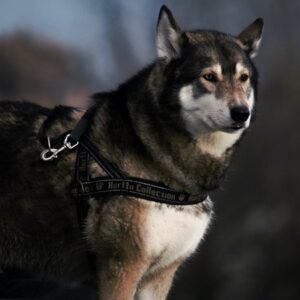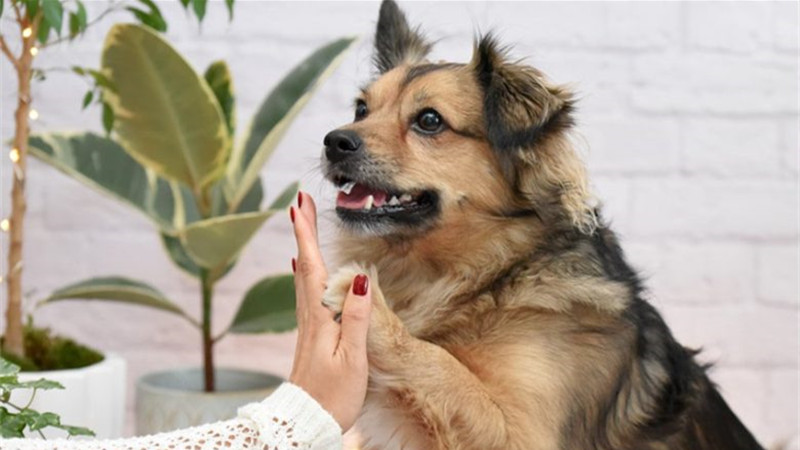
Just like humans, our canine companions can experience anxiety. From separation concerns to noise phobias, dog anxiety can manifest in various forms. Recognizing the signs of this condition and understanding how to calm dog anxiety naturally is essential for promoting a healthy and happy life for your furry friend.
This article explores the roots of dog anxiety, its triggers, and how to manage it using natural methods.
Understanding Dog Anxiety

Dog anxiety is a fairly common issue and can manifest in a variety of ways. Just as with humans, dogs may experience anxiety due to various reasons.
It could be situational, such as during thunderstorms or when exposed to new environments or people, or it could be more deep-seated, often related to early-life experiences or lack of socialization during the critical early months. Symptoms of anxiety in dogs may vary but often involve one or more of the following:
- Excessive Barking or Howling: One of the first and most common signs of anxiety in dogs is excessive barking or howling, especially when left alone.
- Chewing and Destructive Behavior: An anxious dog might exhibit destructive behavior such as chewing furniture, digging at doors, or tearing up home items, often in an attempt to escape the source of their anxiety.
- Pacing and Restlessness: Dogs might show their anxiety by constantly pacing back and forth or being unable to settle down.
- Shivering or Trembling: Some dogs might shiver or tremble when they are anxious or scared. This can often be seen during thunderstorms or fireworks.
- Excessive Licking or Chewing: Dogs might lick or chew on their own bodies excessively when under stress. This can result in sores and other skin issues if not addressed.
- Avoidance or Hiding: An anxious dog might often attempt to hide or escape from the situation that is causing their anxiety. This might involve hiding behind furniture or in corners of the house, or trying to escape from the house or yard.
- Accidents in the House: Even a well-trained dog might have accidents in the house when they are feeling anxious or stressed.
- Changes in Appetite: Anxiety might cause some dogs to lose their appetite or, in some cases, eat more than usual.
These symptoms can be subtle, or they can be very obvious. The key is to be observant and look for changes in your dog’s behavior. Remember that while it’s normal for a dog to exhibit some of these behaviors occasionally, regular occurrence of these symptoms might indicate an anxiety disorder.
Common Situations that Trigger Dog Anxiety
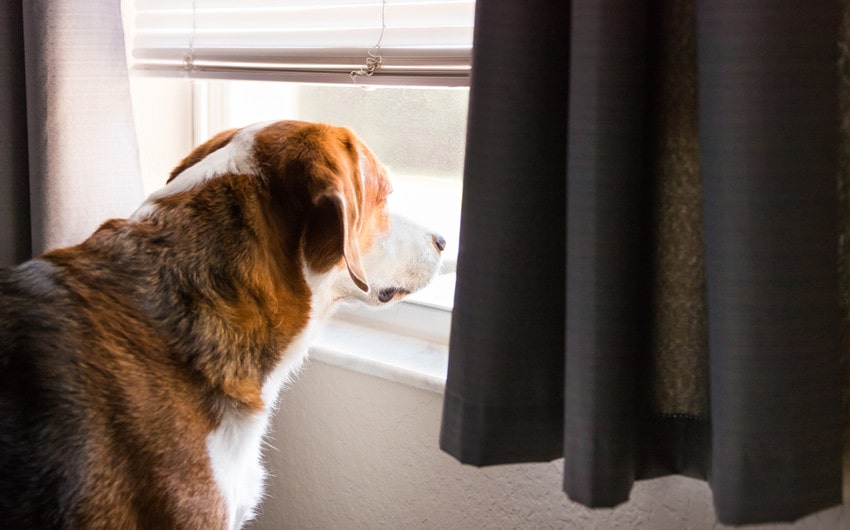
1. Separation Anxiety
This is one of the most common types of anxiety in dogs. Dogs with separation anxiety can’t bear to be parted from their owners and can become stressed and anxious when left alone. Symptoms can include destructive behavior, house soiling, and excessive barking or howling.
2. Noise Anxiety
Some dogs are particularly sensitive to loud noises. This type of anxiety is commonly triggered by thunderstorms, fireworks, loud vehicles, and even loud voices. Dogs with noise anxiety might show signs like trembling, panting, hiding, or trying to escape.
3. Travel Anxiety
Many dogs feel anxious when traveling, especially if they’re not used to it. This can manifest as restlessness, drooling, shaking, or even vomiting. Travel anxiety can occur during car rides or when in unfamiliar environments.
4. Social Anxiety
Dogs, like humans, can also experience social anxiety. This can be triggered by a variety of social situations, such as meeting new people or other dogs. A dog with social anxiety might exhibit avoidance behaviors, excessive barking, or even aggression.
5. Change-Induced Anxiety
Significant changes in a dog’s life, such as moving to a new home, addition of a new family member, or the loss of a family member or another pet, can trigger anxiety.
6. Phobia-Induced Anxiety
Some dogs have specific phobias, such as a fear of heights, specific places, or specific objects like vacuum cleaners. When exposed to these phobias, they may exhibit signs of anxiety.
Understanding these situations can help you identify potential triggers for your dog’s anxiety and allow you to take proactive steps to help them feel more secure.
Natural Remedies for Dog Anxiety
Sure, here’s an expanded version of the Natural Remedies section with more detail and additional remedies:
1. Regular Exercise

Regular exercise is an effective natural remedy for anxiety in dogs. Physical activity helps in burning off excess energy, reducing nervousness and restlessness. Moreover, exercise triggers the release of endorphins, which are natural mood lifters. Depending on your dog’s breed and age, a combination of walks, playtime, and other physical activities can be integrated into their routine.
2. A Balanced Diet

A dog’s diet can play a critical role in managing anxiety. Foods rich in proteins, such as Mighty Munch, can help regulate their mood and energy levels. Omega-3 fatty acids, found in fish oils and flaxseed, are known to support brain health and have a calming effect. On the other hand, certain food additives and artificial colors can cause hyperactivity and exacerbate anxiety issues.
3. Mental Stimulation
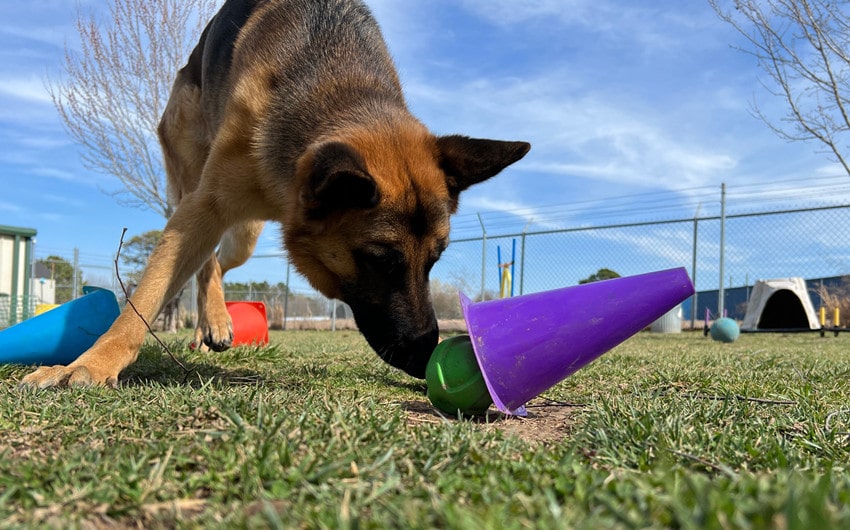
Keeping your dog mentally stimulated can help distract them from sources of anxiety. This can be achieved through puzzle toys, scent games, or training exercises. Keeping your dog’s mind engaged can also promote overall cognitive health.
4. Massage and Physical Contact

Touch has a powerful calming effect on dogs. Regular massages can help to reduce your dog’s heart rate, lower blood pressure, and promote a sense of relaxation. Besides, cuddling or petting your dog can strengthen the bond between you and your pet and make them feel secure and loved.
5. Music Therapy

Some studies suggest that playing calming music or nature sounds can help soothe anxious dogs, particularly during stressful events like thunderstorms or fireworks. The genre of music called “Through a Dog’s Ear” has been specifically designed to reduce anxiety in dogs.
Additionally, music specially composed for puppies with anxiety can also be beneficial. A great example of this is the video titled “5 HOURS of Deep Separation Anxiety Music for Dog Relaxation”. This video features soothing melodies designed to calm puppies, reducing their anxiety and creating a peaceful environment. Do give it a try with your furry friend, as the gentle tunes can promote relaxation and peace.
6. Herbal Supplements and CBD
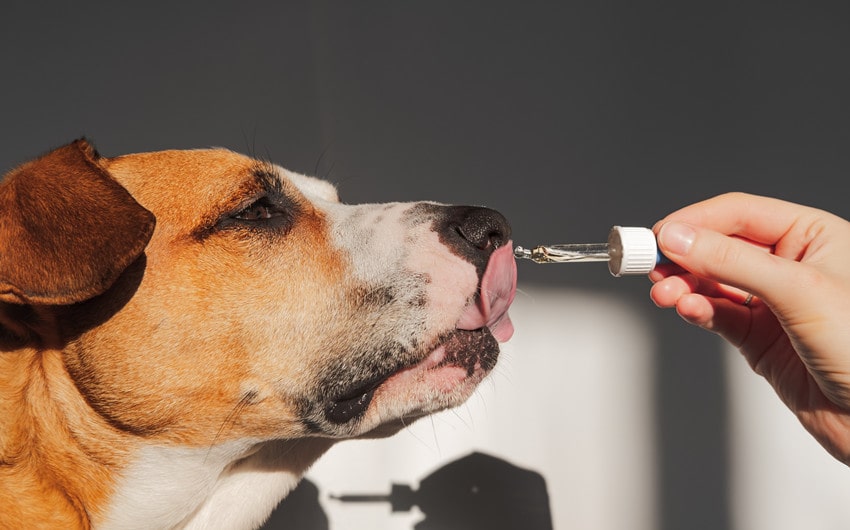
Various natural supplements can aid in managing dog anxiety. These include chamomile, valerian, and passionflower, which have calming properties. CBD oil is another natural supplement gaining popularity due to its potential calming effects and its ability to help manage symptoms of anxiety. However, it’s crucial to consult with a vet before starting any new supplement regimen.
7. Aromatherapy

Certain essential oils, such as lavender and chamomile, are known for their calming properties. However, it’s important to note that not all essential oils are safe for dogs, and they should always be used in a diffuser, never applied directly to the dog’s skin.
8. Acupressure and Acupuncture
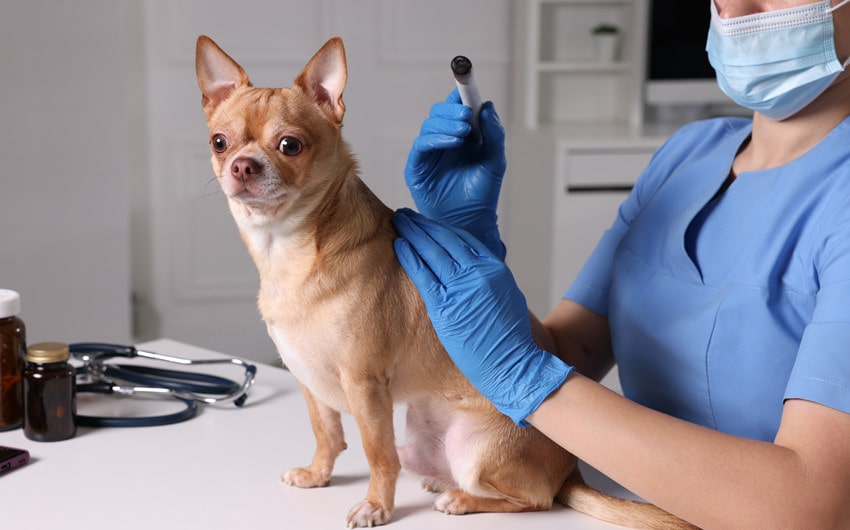
These traditional Chinese medicine techniques can also be used to reduce anxiety in dogs. Acupressure involves applying pressure to specific points on your dog’s body to promote relaxation and healing. Acupuncture, performed by trained professionals, can stimulate the nervous system and promote the release of calming chemicals in the body.
9. Holistic Remedies

Various holistic remedies like Bach Flower Remedies are available. Rescue Remedy, for example, is a mix of five Bach Flower Remedies (Star of Bethlehem, Rock Rose, Cherry Plum, Impatiens, and Clematis) that can help in stressful situations. As always, it’s essential to consult a vet or a pet health professional before starting any new remedy.
10. Homeopathy

Homeopathic remedies, although controversial in scientific communities due to lack of solid evidence, have been used by some pet owners to manage dog anxiety. Remedies such as Aconitum Napellus (for fear and panic) and Phosphorus (for general anxiety) are among those often suggested. Again, it is crucial to consult a professional before administering these.
11. Calming Wraps or Anxiety Wraps

Image source: Pinterest
These wraps are designed to apply gentle, constant pressure on your dog’s body, producing a calming effect. They can be especially useful for dogs with anxiety triggered by thunderstorms, fireworks, or other loud noises. The concept is similar to swaddling a baby or the use of weighted blankets in humans.
12. Consistent Routine
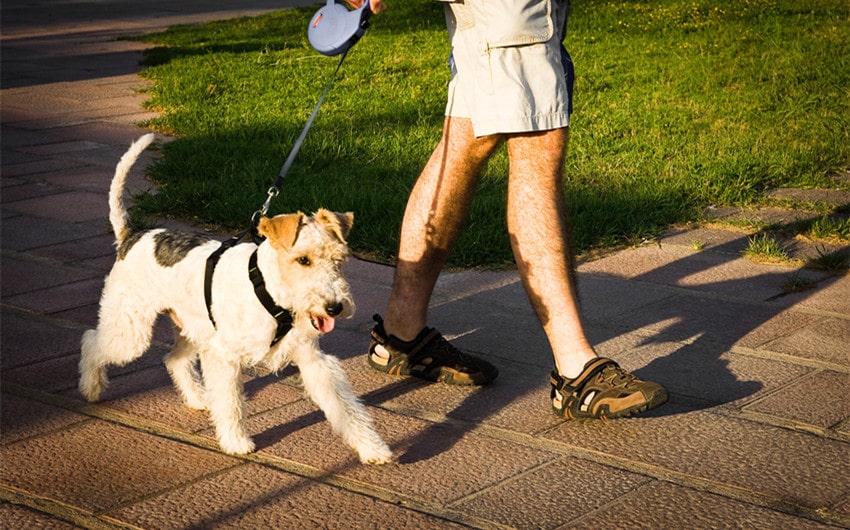
Dogs are creatures of habit, and a consistent daily routine can provide a sense of security and reduce anxiety. Try to feed, walk, and play with your dog around the same time each day.
13. Calming Spaces

Creating a dedicated space filled with their favorite toys, a comfy bed, and a piece of clothing that smells like you can serve as a safe haven for your dog when they feel anxious. This can be particularly effective for dogs with separation anxiety.
14. TTouch (Tellington TTouch)
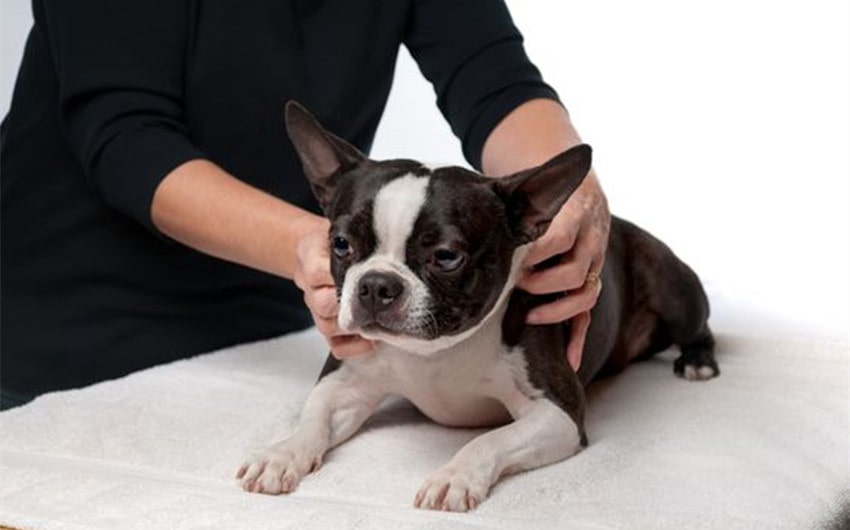
Image source: Pinterest
This is a specific type of animal massage technique developed by Linda Tellington-Jones. It involves using a specific series of circular touches and strokes to promote relaxation and trust. This technique requires learning from a certified practitioner or through guided resources.
15. Animal Reiki
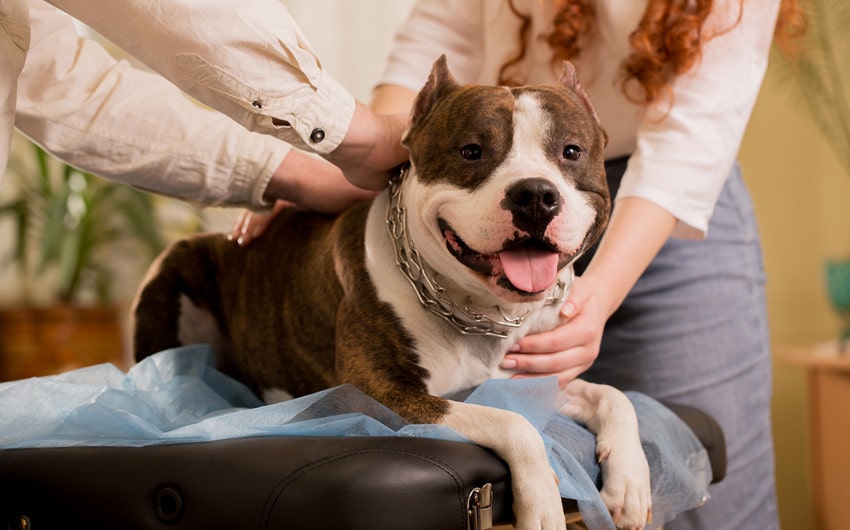
Reiki, a Japanese method of energy healing, is another alternative therapy used for calming dogs. It is a non-invasive method and is based on the idea that an unseen “life force energy” flows through us and is what causes us to be alive. While scientific support is limited, some dog owners and practitioners suggest it can support emotional healing and balance.
Training Techniques to Alleviate Anxiety

- Desensitization: Desensitization involves gradual exposure to the source of anxiety in low levels until the dog becomes accustomed to it. For example, if your dog has separation anxiety, you might start by leaving for short periods and gradually increase the time you are gone.
- Counter-Conditioning: This technique involves changing your dog’s response to the stimuli responsible for anxiety, usually by replacing the anxious or aggressive behavior with a behavior like sitting or focusing on the owner.
- Clicker Training: Clicker training is a positive reinforcement method that can help reduce anxiety. The clicker signals the dog that a reward is coming, which can make the dog feel more secure and less anxious.
- Obedience Training: Basic obedience training can give anxious dogs a sense of structure and order, reducing anxiety. Commands like “sit,” “stay,” and “come” can also help manage and control stressful situations.
- Socialization: Proper socialization can prevent dogs from being anxious around people and other animals. It involves exposing your dog to a variety of people, places, and situations to help them become more confident.
- Crate Training: For some dogs, a crate can provide a sense of security and serve as a safe place when they are feeling anxious.
Each dog is unique, so what works for one might not work for another. The key is to be patient, consistent, and positive in your approach. It’s also recommended to consult with a professional dog trainer or a dog behaviorist for guidance, especially for severe cases of anxiety.
When to Seek Professional Help
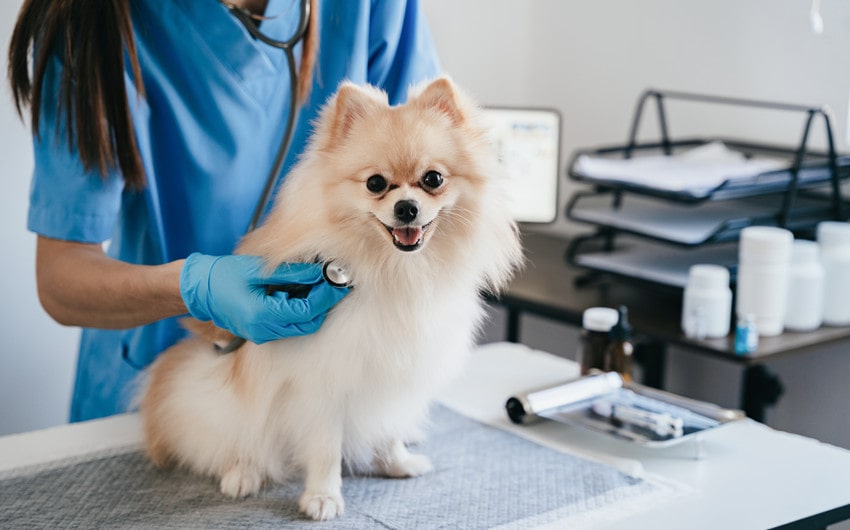
Despite your best efforts, there might be times when natural remedies and training techniques are not enough. In such cases, it’s crucial to seek the help of a professional, such as a veterinarian or a certified pet behaviorist.
Conclusion
Understanding and learning how to calm dog anxiety naturally is a pivotal part of responsible pet ownership. With patience, love, and the right strategies, you can help your canine companion live a happier, less anxious life.




